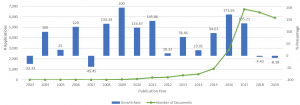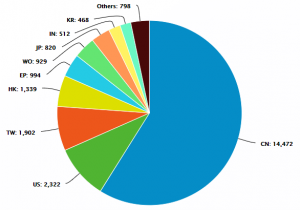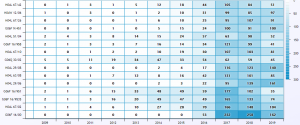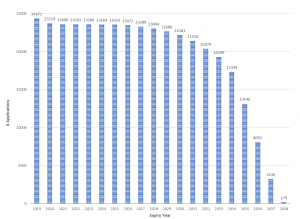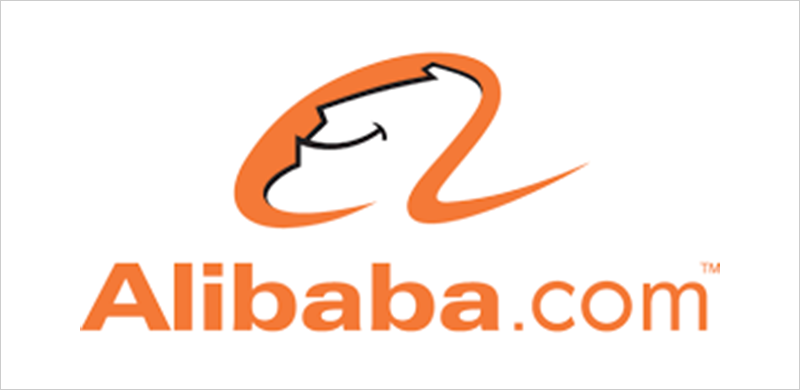
Jack Ma, with a group of 18 people, started an online wholesale e-commerce website called Alibaba from an apartment in the city of Hangzhou in December 1999. Over two decades of its existence, Alibaba has grown to employ over 66,000 people and is valued at about $460 billion. With its three main websites, Taobao, Tmall and Alibaba.com, which together host millions of merchants and businesses and boast of trillions of users, the company has grown into one of the largest online marketplaces in the world.
Alibaba raised $25 billion in its U.S. IPO in 2014 and set a record as the world’s biggest public stock offering, as well as became one of the most valuable tech companies in the world. Jack Ma, known for his business philosophy and inspiring story of becoming one of the richest men in the world, recently stepped down as Alibaba’s chairman.
This week we present insights into Alibaba’s large patent portfolio of around 25,000 currently active published patent applications.
General Trends
Alibaba’s year-wise published patents exhibit a sharp upward trend post 2015, which almost coincides with its IPO, the time when Alibaba also obtained patents from other companies to beef up its patent portfolio. As seen in Figure 1, Alibaba’s published patent applications experienced a surge in 2008-09, then a more significant one in 2015-16 followed by a decline in 2017-18.
Figure 2 shows that China, with nearly 60% of the published applications, is the preferred filing jurisdiction for the Alibaba Group. Its other preferred jurisdictions – United States, Taiwan, Hong Kong and Europe – also represent the major markets where Alibaba has a strong presence.
Technology Trends
Alibaba owns a diverse portfolio with patents covering technologies related to search engines and cloud computing, mobile messaging and chat, payment processing and web-based shopping among others. Alibaba also possesses patents for on-demand delivery technologies, payments, credit and loan technology as well as blockchain technology. With Jack Ma’s belief that blockchain technology has the potential to change the world, Alibaba has been focusing on integrating this technology to boost its product portfolio and offerings. In 2017, more than 10% of the blockchain patent filings worldwide belonged to the Alibaba Group.
Figure 3 shows the evolution of technologies addressed by Alibaba’s portfolio. The technologies covered by CPC codes such as G06F 16/00 (Database/file structures), H04L 29/06 (Digital transmission by a protocol) and H04L 29/08 (Transmission control procedure) show the highest year-on-year growth. On the other hand, the technologies covered by CPC codes such as H04L 67/02 (Hypertext transfer protocol), G06F 16/9535 (Search customisation based on user profiles), G06F 16/951 (Web crawling), H04L 63/08 (Authentication through packet data) and H04L 67/42 (Protocols for client-server architectures) show a declining trend.
An emerging technology trend analysis (included in the report) shows that technology segments such as ‘Data processing for finance, insurance and tax’ and ‘Data processing for admin, management’ are among the fastest growing technology segments. This corroborates with Alibaba’s expansion of its financial services arm, Ant Financial. In 2018, Ant Financial launched Ant Financial Technology that owns product portfolios related to large-scale financial transaction technologies, financial security technologies, financial intelligence technologies, next-generation interaction technologies and blockchain applications.
Figure 4 shows the portfolio age and decay for Alibaba’s patent portfolio. It displays the number of unexpired applications at the end of each year. This number decreases only gradually till 2030. The graph is based on the current portfolio assets held by Alibaba and shows that the company’s portfolio is of fairly recent vintage in terms of the filing dates of its patent applications. This fact, coupled with additional patents being filed, will provide Alibaba with a healthy patent coverage in the coming years.
A category-wise competitor comparison shows that Alibaba directly competes with Alphabet in many of the technology categories covered by its portfolio, such as user authentication, finance and payments and network security verification. Alibaba leads in technologies related to electronic shopping, device specific payments and authentication. Amazon and Tencent also closely compete with Alibaba in multiple technology areas. Read our report to get all the details about Alibaba’s portfolio and the complete competitive comparison.
In the most recent quarterly earnings report for June 2019, Alibaba revealed a 42% year-over-year revenue growth. While the e-commerce businesses experienced a 44% revenue increase, the Alibaba Cloud grew by 66% in the same period. It will be interesting to see how the company grows under its new leadership over the next few years.
